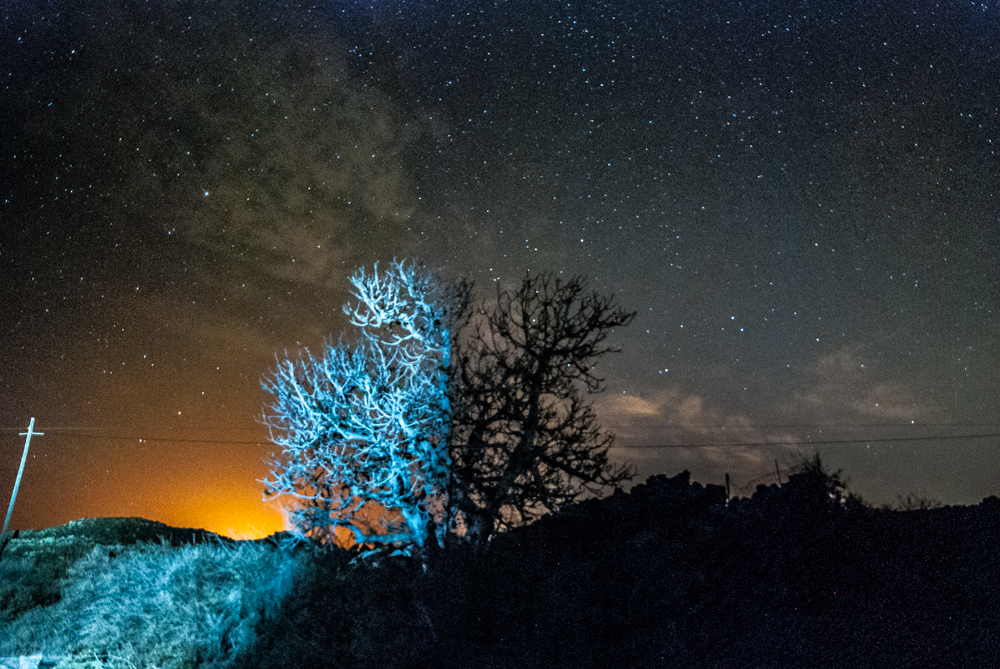….
When October starts, Autumn is already here: the days are shorter and shorter and the nights get longer, making easier to enjoy the night sky in more convenient hours.
The mayor planets, accompanying us from the beginning of Summer, seem not disposed to leave us for the moment: while Venus and Jupiter are well visible but quite low on the Western horizon, Saturn and Mars are quite high towards the South and in a good position for an observation through the telescope. We should not miss the remarkable picture offered by 'The Lord of The Rings', so wonderful that it appears to be unreal.
The most brilliant part of the Milky Way is now slowly disappearing with Sagittarius into the Southern horizon, but another of her arms, Perseus's, is now the protagonist crossing the sky from the East to the zenith through the Summer Triangle, constituted by the stars Vega (in Lyra), Deneb (in the Swan) and Altair (in the Eagle); in this area we should not miss visiting the beautiful double star Albireo, a fascinating view through whatever telescope.
And the Moon will not miss her monthly date, once more in the second decade of the month. Her seas, her craters and her mountains leave us astonished due the wonderful details we can admire through a telescope in spite of the great distance.
Clear skies to everybody!
..
Cuando comienza octubre, el otoño ya ha empezado: los días se hacen más cortos y la noches se alargan, propiciando la observación del cielo nocturno en horarios más cómodos.
Los planetas mayores, que nos acompañan desde el principio del verano, se resisten a desparecer: si bien Venus y Júpiter se presentan más bien bajos hacia el horizonte Oeste, tanto Saturno como Marte siguen altos hacia el Sur y siguen en una posición muy favorable para su observación con el telescopio. No debemos perdernos el espectáculo que brinda el 'Señor de los Anillos', tan asombroso que parece casi irreal.
Y mientras que la rama más brillante de la Vía Láctea se va hundiendo con Sagitario poco a poco en el Sur, todavía nos queda por admirar su brazo de Perseo, que cruza el cielo desde el Noreste hasta en cenit, pasando por el característico Triángulo del Verano, que forman las estrellas Vega (en la Lira), Deneb (en el Cisne) y Altair (en el Águila); en esta zona no debemos olvidar visitar a la maravillosa estrella doble Albireo, que nos ofrece un espectáculo fascinante con un telescopio.
Tampoco la Luna falta a su cita mensual, una vez más en la segunda decena del mes. Sus cráteres, sus mares y sus montañas no dejan de asombrarnos por el gran detalle que nos ofrecen con el telescopio a pesar de su lejanía.
¡Cielos despejados para todos!
….


